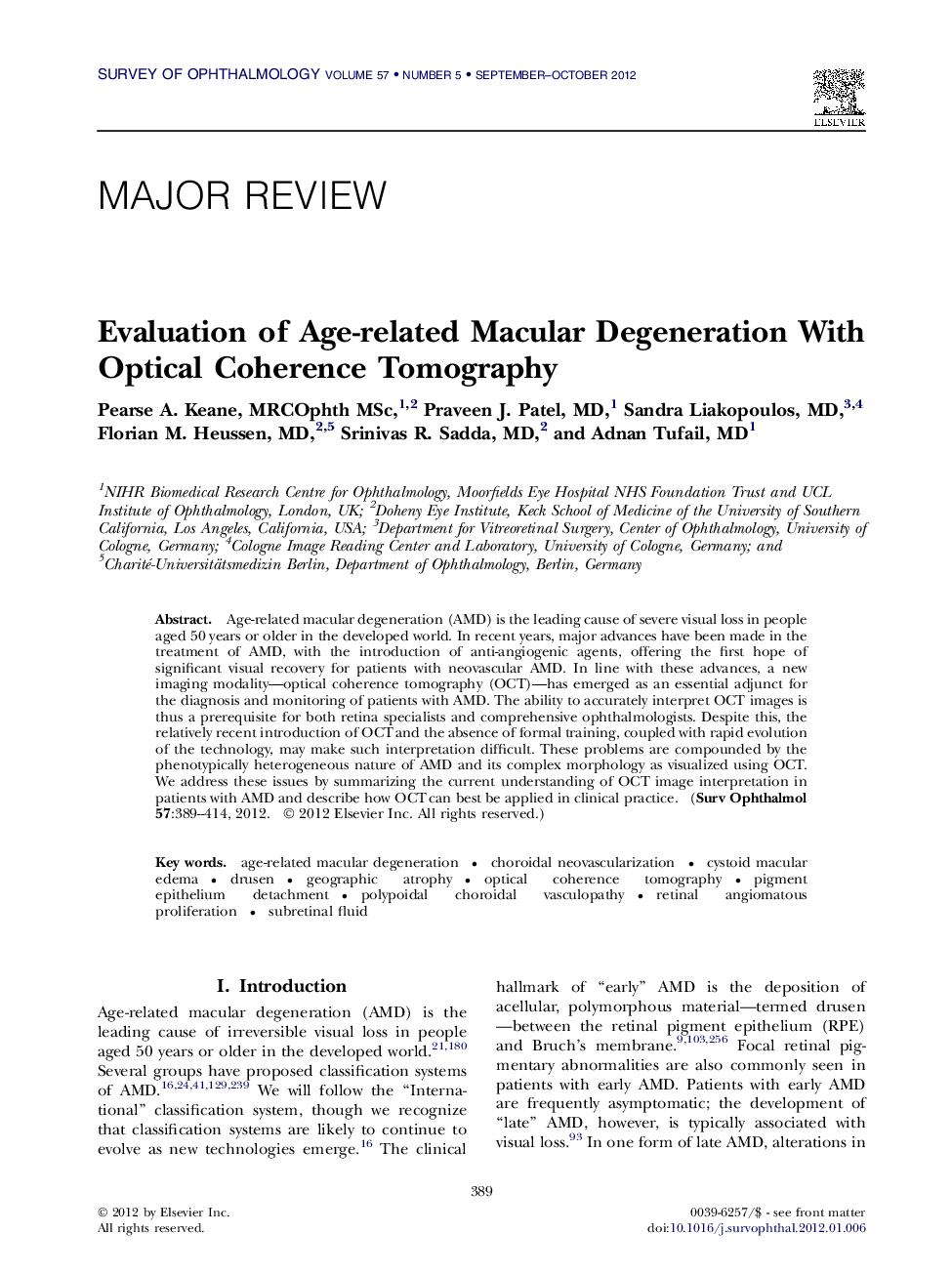| Article ID | Journal | Published Year | Pages | File Type |
|---|---|---|---|---|
| 4032800 | Survey of Ophthalmology | 2012 | 26 Pages |
Age-related macular degeneration (AMD) is the leading cause of severe visual loss in people aged 50 years or older in the developed world. In recent years, major advances have been made in the treatment of AMD, with the introduction of anti-angiogenic agents, offering the first hope of significant visual recovery for patients with neovascular AMD. In line with these advances, a new imaging modality—optical coherence tomography (OCT)—has emerged as an essential adjunct for the diagnosis and monitoring of patients with AMD. The ability to accurately interpret OCT images is thus a prerequisite for both retina specialists and comprehensive ophthalmologists. Despite this, the relatively recent introduction of OCT and the absence of formal training, coupled with rapid evolution of the technology, may make such interpretation difficult. These problems are compounded by the phenotypically heterogeneous nature of AMD and its complex morphology as visualized using OCT. We address these issues by summarizing the current understanding of OCT image interpretation in patients with AMD and describe how OCT can best be applied in clinical practice.
